#artist is angelina beloff
Text
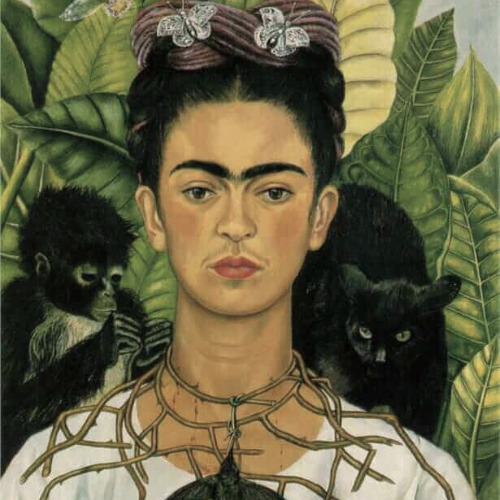
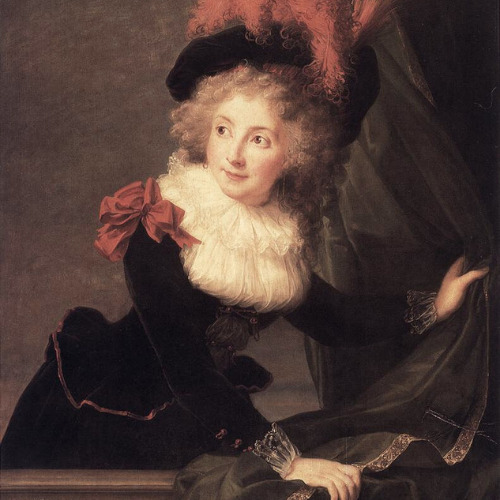


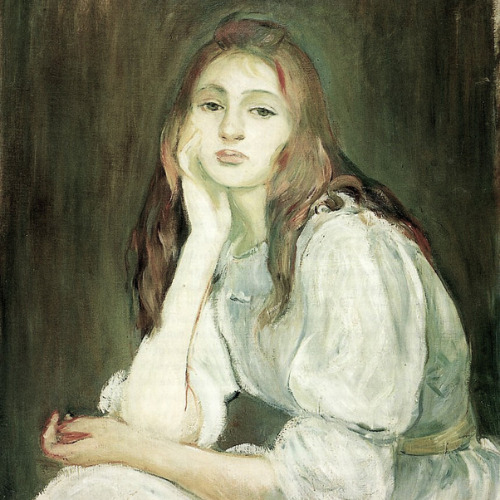
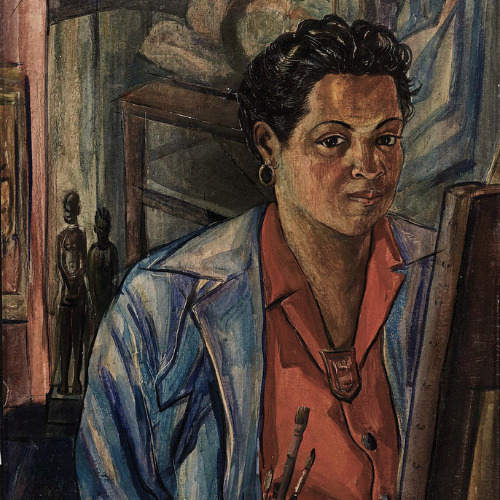
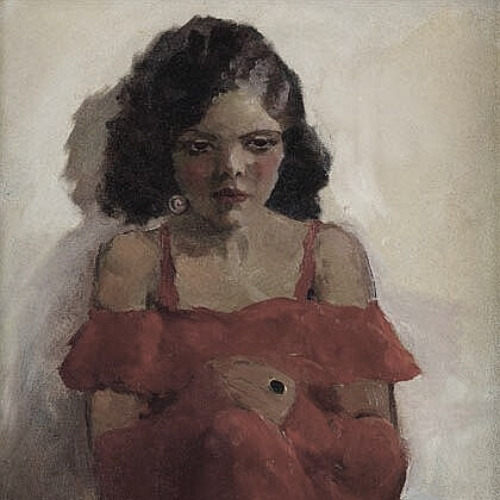
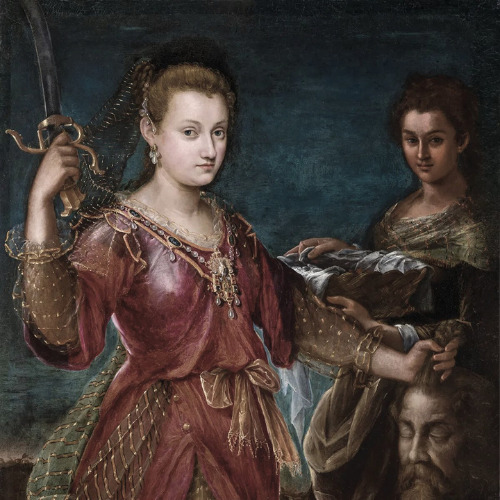



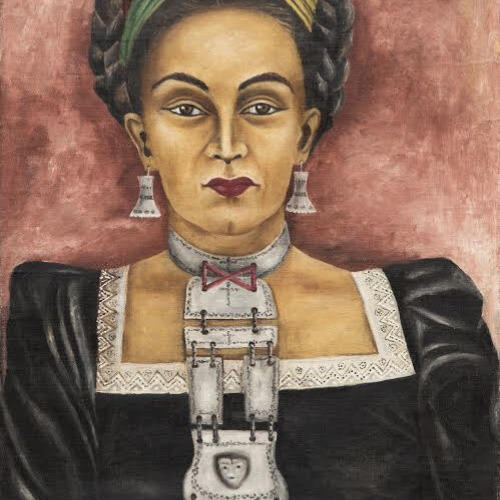

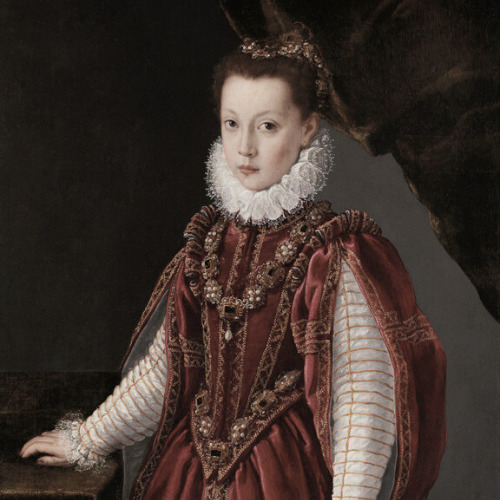








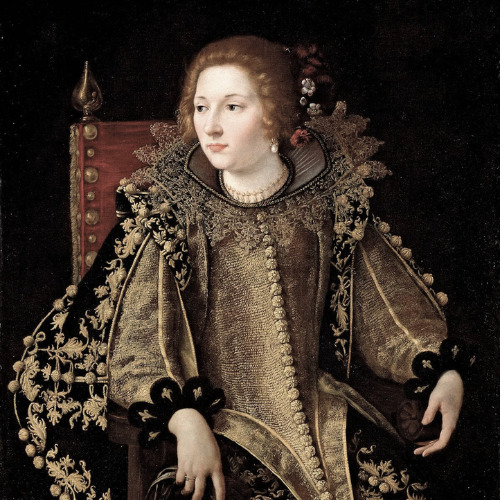





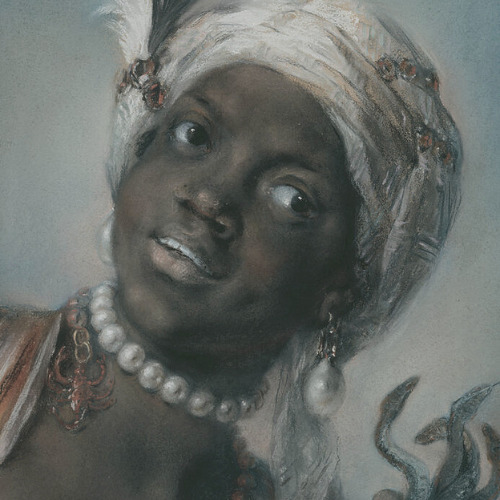

women by female artists
#artist is frida kahlo#artist is elisabeth louise vifee le brun#artist is maru cassatt#artist is angelica kauffmann#artist is berthe morisot#artist is lois mailou jones#artist is laura wheeler waring#artist is lavinia fontana#artist is lynette yiadom boakye#artist is safeya binzagr#artist is hayv kahraman#artist is maria izquierdo#artist is aliza nisebaum#artist is sofonisba anguissola#artist is angel de cora#artist is chen ke#artist is catheraine van hemessen#artist is fu daokun#artist is lubaina himid#artist is guan dao gao#artist is pitaloosie saila and#artist is rocio navarro#artist is artemisia gentileschi#artist is judith leyster#artist is guan zilan#artist is gwendolyn bennett#artist is natalia goncharova#artist is angelina beloff#artist is rosalba carriera#artist is thalia flora-karavia
184 notes
·
View notes
Photo

Diego Rivera Two Women (Dos Mujeres, portrait of Angelina Beloff and Maria Dolores Bastian ), 1914 The Arkansas Arts Center, Little Rock, Arkansas, USA artinfinitus #diegorivera #artinfinitus #painting #art #arthistory #artgallery #fineart #arte #creative #inspiration #museum #light #artist #artinspiration #artwork #poetry #gallery #life #colors #artistic #painter #pintura #arte #museo #artista #galería #peinture #musée #artiste #galerie https://www.instagram.com/p/CmMKtilIkDA/?igshid=NGJjMDIxMWI=
#diegorivera#artinfinitus#painting#art#arthistory#artgallery#fineart#arte#creative#inspiration#museum#light#artist#artinspiration#artwork#poetry#gallery#life#colors#artistic#painter#pintura#museo#artista#galería#peinture#musée#artiste#galerie
2 notes
·
View notes
Text
In 1929, Diego Rivera married which fellow Mexican artist?

Magdalena Carmen Frida Kahlo y Calderón (1907-1954), known professionally as Frida Kahlo, was a Mexican painter famous for her surreal and very personal works. She was married to Diego Rivera (1886-1957), a well-known painter and muralist.
Kahlo intended to become a doctor until a traffic accident at the age of 18 left her severely injured her. While recovering from the accident, Kahlo took up painting as a method of self-expression about things that had happened to her. As well as the traffic accident, Kahlo's paintings depicted her feelings about not being able to have children and her pride in her native Mexican culture.
Kahlo's paintings attracted the attention of Diego Rivera, whom she married despite being openly bisexual. They met at a party held by a member of the Mexican Communist Party and married on 21st August 1929. Both Kahlo and Rivera conducted affairs during their marriage, which resulted in divorce in 1939, although they remarried in 1940.
Before marrying Kahlo, Diego had two wives, Angelina Beloff, who he divorced in 1921 after a 10-year marriage, and Guadalupe Marín, who he divorced in 1928. Following Kahlo's death in 1954, Rivera married Emma Hurtado, who had been his agent since 1946.
0 notes
Photo
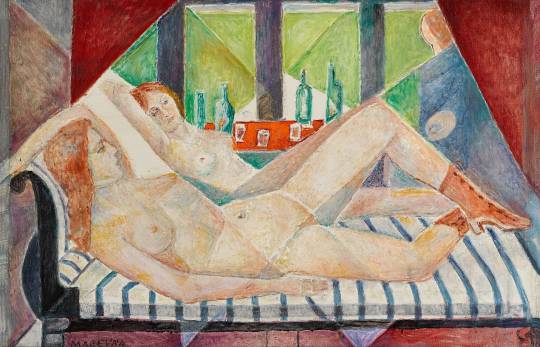
“Reclining Nude”, 1972, by Marevna (Marie Bronislava Vorobieff-Stebelska) (Russian painter, 1892-1984).
~ Marevna was born Marie Vorobieff-Stebelska in 1892 in Cheboksary, Russia. Her mother was an actress and her father a Polish nobleman. She spent a lonely childhood in Tiflis, the capital of Georgia, which was under Russian control.The name Marevna was given to her after a Russian fairy sea princess by Maxim Gorki, a Russian author and political activist whom she met in Italy, and this then became her signature.An audacious yet charming and high spirited character, Marevna travelled Europe extensively and was one of the first women to discover Cubism, achieving remarkable blends of pointillism and structure in her work. Marevna was initially a portraitist but embraced cubism, partially due to the influences of her relationship with the world famous Mexican painter/muralist Diego Rivera. Marevna entered the Moscow Stroganov Art Academy in 1910 and the following year went to Italy. In 1912 she went on to enter Paris and make a dramatic entry into the artistic community of La Ruche and live through the anti-cubist feelings of the First World War. Marevnas first significant exhibition was in 1912 at The Tuileries in France. Marevna went on to write her book Life with the Painters of La Ruche about her life during this period with the likes of Picasso, Braque, Matisse, Soutine and Rivera to mention but a few. Marevna met Diego Rivera in 1915 when he temporarily became part of La Ruche. Although Rivera was still in a common-law marriage with Russian artist Angelina Beloff, he and Marevna had a daughter called Marika (1919 - 2010) and they continued to experienced a stormy and complicated relationship until he returned home in 1921. Marevna spent her mature years residing with her daughter Marika in England and lived at Athelhampton House from 1948 to 1956. Marevna continued to paint throughout this period and her work during this time include a portrait of son-in-law Rodney Phillips and the world famous pyramid topiaries of Athelhampton’s Great Court. Some of her work is now displayed in Athelhamptons West Wing Gallery. ~
5 notes
·
View notes
Photo

1 - 1925, studio of the Russian painter and sculptor Marc Chagall (1887-1985) with Bella and his daughter Ida. 2 - 1915, workshop of the Russian sculptor Léon Indenbaum (1890-1981) with his wife Céline. From 1911 to 1913, these two friends and compatriots had their workshops next to each other at “La Ruche” on the 2nd floor of the Rotunda in the Montparnasse district in Paris. The artists’ studios of “La Ruche” from 1908 to 1930: - American sculptor: Jacob Epstein - English sculptor: Barbara Hepworth - Belarusian sculptors (Russian Empire): Leo Indenbaum, Oscar Miestchaninoff - Belarusian sculptors and painters (Russian Empire): Ossip Zadkine, Marc Chagall (Moses Zakharovich Chagalov) - Belarusian painters (Russian Empire): Michel Kikoine, Pinchus Kremegne, Chaim Soutine - French sculptors: Alfred Boucher, Antoine Bourdelle, Charles Despiau, Marcel Damboise, Henri Laurens, Aristide Maillol - French painter and sculptor: Fernand Léger - Hungarian sculptor: Joseph Csaky - Italian sculptor and painter: Amedeo Modigliani and his companion the French painter Jeanne Hebuterne - Japanese painter: Leonard Foujita (Tsuguharu Fujita) - Latvian painter: Jacques Chapiro - Mexican painters: Diego Rivera with his wife Angelina Beloff, his mistresses Marevna (Maria Vorobieff) and Frida Kahlo - Polish painter: Moise Kisling - Romanian sculptor: Irene Codreano - Romanian sculptor: Constantin Brancusi - Russian painter: Marevna (Marie Vorobieff) - Swiss sculptors: Alberto Giacometti and his brother Diego Giacometti - Ukrainian sculptor: Chana Orloff - Ukrainian sculptor: Alexander Archipenko - Ukrainian painter: Isaac Dobrinsky
#marcchagall#chagall#chagallmarc#indenbaumleon#indenbaum#leonindenbaum#ecoledeparis#schoolofparis#russianartist#russiansculptor#russianpainter
12 notes
·
View notes
Text
Diego Rivera
Diego Rivera (1886–1957) was the husband of Mexican Surrealist painter Frida Kahlo, who he met through their membership in the Mexican Communist Party. He'd previously been married to Russian painter Angelina Beloff and novelist Guadalupe Marín. He's depicted in Kahlo's 1931 painting Frieda and Diego Rivera, based on a photograph from their wedding. He was part of a circle of influential artists that included painters like Jeanne Hébuterne and her common-law husband Amedeo Modigliani. His primary medium was political murals inspired by a combination of traditional Mexican and modern painting styles. In his 1928 mural En el Arsenal, Kahlo can be seen handing out munitions. Rivera was the father of four children including architect Ruth Rivera Marín and actress Marika Rivera.
See another one →
1 note
·
View note
Text
Frida Kahlo and Diego Rivera
Frida Kahlo was born Magdalena Carmen Frida Kahlo y Calderón in Coyoacán, Mexico, on the 6ᵗʰ of July 1907. She was daughter of a German father and a mestiza. Frida was disabled by polio at the age of six which made her right leg shorter and thinner than the left, and suffered a bus accident at the age of eighteen which caused her lifelong pain and medical problems. Kahlo had been a promising student for medical school but during her recovery from the accident she returned to her childhood hobby of art with the idea of becoming an artist. Kahlo later described the atmosphere in her childhood home as often "very, very sad". Both parents were often sick, and their marriage was devoid of love. Her relationship with her mother, Matilde, was extremely tense. Kahlo described her mother as "kind, active and intelligent, but also calculating, cruel and fanatically religious". Although Kahlo claimed that her father Guillermo was Jewish, he was in fact a Lutheran.
Diego María de la Concepción Juan Nepomuceno Estanislao de la Rivera y Barrientos Acosta y Rodríguez was born in Guanajuato, Mexico, on the 8ᵗʰ of December 1886. The family were said to have converso ancestry. Rivera wrote in 1935: "My Jewishness is the dominant element in my life." Diego was born as one of twin boys in Guanajuato but his twin brother Carlos died at the age of two. Rivera began drawing at the age of three. When he was caught drawing on the walls of the house, his parents installed chalkboards and canvas on the walls to encourage him. After moving to Paris, Diego met Angelina Beloff, an artist from the pre-Revolutionary Russian Empire. They married in 1911 and had a son who died young at the age of two. During this time, Rivera also had a relationship with painter Maria Vorobieff-Stebelska, who gave birth to a daughter in 1918 or 1919. Rivera divorced Beloff and married Guadalupe Marín in June 1922, after having returned to Mexico. They had two daughters together: Ruth and Guadalupe.
Frida joined the Mexican Communist Party in 1927 through which she met Diego who was 21 years senior and still married to Guadalupe Marín. Frida and Diego married in 1929 despite Frida’s parents disapproval of the marriage nicknaming the couple «the elephant and the dove» because of their size difference.
Soon after the marriage, Kahlo and Rivera moved to Cuernavaca in the rural state of Morelos, where he had been commissioned to paint murals for the Palace of Cortés. Around the same time, she resigned her membership of the PCM in support of Rivera, who had been expelled shortly before the marriage for his support of the leftist opposition movement within the Third International.
After Rivera had completed the commission in Cuernavaca, the couple moved to San Francisco, where he painted murals for the Luncheon Club of the San Francisco Stock Exchange and the California School of Fine Arts. Frida's long love affair with Hungarian-American photographer Nickolas Muray most likely began around this time.
Kahlo and Rivera returned to Mexico for the summer of 1931, and in the fall traveled to New York City for the opening of Rivera's retrospective at the Museum of Modern Art (MoMA). By that time, Kahlo also had an affair with Georgia O'Keeffe who was married photographer Alfred Stieglitz. O'Keeffe and Kahlo did stay in each other's lives. In 1938, O'Keeffe was among the attendees when Kahlo's work was exhibited at a gallery in New York City.
In April 1932, they headed to Detroit, where Rivera had been commissioned to paint murals for the Detroit Institute of Arts. The year spent in Detroit was a difficult time for Kahlo. Although she had enjoyed visiting San Francisco and New York City, she disliked aspects of American society, which she regarded as colonialist, as well as most Americans, whom she found "boring". She disliked having to socialize with capitalists such as Henry and Edsel Ford, and was angered that many of the hotels in Detroit refused to accept Jewish guests. Kahlo's time in Detroit was also complicated by a pregnancy. Her doctor agreed to perform an abortion, but the medication used was ineffective. Kahlo was deeply ambivalent about having a child and had already undergone an abortion earlier in her marriage to Rivera. She reluctantly agreed to continue with the pregnancy, but miscarried in July.
Kahlo and Rivera returned to New York in March 1933, for he had been commissioned to paint a mural for the Rockefeller Center.
Frida and Diego returned to Mexico City. She was again experiencing health problems –undergoing an appendectomy, two abortions, and the amputation of gangrenous toes– and her marriage to Rivera had become strained. He was not happy to be back in Mexico and blamed Kahlo for their return. While he had been unfaithful to her before, he now embarked on an affair with her younger sister Cristina, which deeply hurt Kahlo's feelings. After discovering it in early 1935, she moved to an apartment in central Mexico City and considered divorcing him. She also had an affair of her own with American artist Isamu Noguchi. Kahlo reconciled with Rivera and Cristina later in 1935 and moved back to San Ángel.
Kahlo and Rivera successfully petitioned the Mexican government to grant asylum to former Soviet leader Leon Trotsky and offered a house for him and his wife Natalia Sedova as a residence. The couple lived there from January 1937 until April 1939, with Kahlo and Trotsky not only becoming good friends but also having a brief affair.
After opening an exhibition in Paris and having an affair with Parisian nightclub sensation Josephine Baker, Kahlo sailed back to New York. She was eager to be reunited with Muray, but he decided to end their affair, as he had met another woman whom he was planning to marry. Kahlo traveled back to Mexico City, where Rivera requested a divorce from her. The exact reasons for his decision are unknown, but he stated publicly that it was merely a "matter of legal convenience in the style of modern times, there are no sentimental, artistic, or economic reasons." According to their friends, the divorce was mainly caused by their mutual infidelities.
On 21 August 1940, Trotsky was assassinated in Coyoacán. Kahlo was briefly suspected of being involved and was arrested and held for two days with her sister Cristina. The following month, Kahlo traveled to San Francisco for medical treatment for back pain and a fungal infection. Her continuously fragile health had increasingly declined since her divorce and was exacerbated by her heavy consumption of alcohol.
Rivera was also in San Francisco after he fled Mexico City with the help of actress Paulette Goddard following Trotsky's murder and accepted a commission. Although Kahlo had a relationship with art dealer Heinz Berggruen during her visit to San Francisco, she and Rivera reconciled. They remarried in a simple civil ceremony on the 8ᵗʰ of December 1940. Kahlo and Rivera returned to Mexico soon after their wedding. The union was less turbulent than before for its first five years. Both were more independent. Both continued having extramarital affairs, Kahlo with both men and women.
Despite the medical treatment she had received in San Francisco, Kahlo's health problems continued throughout the 1940s. Due to her spinal problems, she wore twenty-eight separate supportive corsets, varying from steel and leather to plaster, between 1940 and 1954. She experienced pain in her legs, the infection on her hand had become chronic, and she was also treated for syphilis. The death of her father in April 1941 plunged her into a depression. Her ill health made her increasingly confined at home.
Kahlo's right leg was amputated at the knee due to gangrene in August 1953. She became severely depressed and anxious, and her dependency on painkillers escalated. When Rivera began yet another affair, she attempted suicide by overdose. She wrote in her diary in February 1954, "They amputated my leg six months ago, they have given me centuries of torture and at moments I almost lost my reason. I keep on wanting to kill myself. Diego is what keeps me from it, through my vain idea that he would miss me. But never in my life have I suffered more." In her last days, Kahlo was mostly bedridden with bronchopneumonia, on the 13ᵗʰ of July 1954 her nurse found her dead in her bed. She was 47.

1 note
·
View note
Text
couple analysis: frida kahlo + diego rivera - a tempestuous enchantment
“If I ever loved a woman, the more I loved her, the more I wanted to hurt her. Frida was only the most obvious victim of this disgusting trait.” - Diego Rivera
“There have been two great accidents in my life. One was the trolley, and the other was Diego. Diego was by far the worst.” - Frida Kahlo
People called them the elephant and the dove. He was 42 years old and weighed 136 kg, she was 22 years old and weighed 44 kg. Him cheating on her, her loving him immeasurably. Him adoring her but unable to share his life exclusively with her. But together they evolved and existed as two and one, leaving a big mark on world history. There is something singularly mesmerizing about the fateful encounters that sparked epic, often turbulent, lifelong love affairs — take, for instance, Sylvia Plath and Ted Hughes. But one of modern history’s most vibrant, passionate, and tumultuous loves is that between legendary artists Frida Kahlo and Diego Rivera. Married twice to each other, they had an artistic pairing that was fueled by passion, talent, and infidelity. But in spite of this and the two decades that separated them in years, theirs was still a romance to rival the ages.

Love life of Diego Rivera: As an adult, he married Angelina Beloff in 1911, and she gave birth to a son, Diego (1916–1918). Maria Vorobieff-Stebelska gave birth to a daughter named Marika in 1918 or 1919 when Rivera was married to Angelina (according to House on the Bridge: Ten Turbulent Years with Diego Rivera and Angelina's memoirs called Memorias). He married his second wife, Guadalupe Marín, in June 1922, with whom he had two daughters: Ruth and Guadalupe. He was still married when he met art student Frida Kahlo. They married on August 21, 1929 when he was 42 and she was 22. Their mutual infidelities and his violent temper led to divorce in 1939, but they remarried December 8, 1940 in San Francisco. Rivera later married Emma Hurtado, his agent since 1946, on July 29, 1955, one year after Kahlo's death.
Love life of Frida Kahlo: Her first sexual experience occurred at age 13 with her gym and anatomy teacher, a woman named Sara Zenil. Noticing Frida’s stricken leg, Zenil declared the girl “too frail,” pulled her out of sports, and initiated “a physical relationship” with her. When Kahlo’s mother discovered some compromising letters, she removed Frida from the school and enrolled her instead in the National Preparatory School, where she was one of 35 girls in a student body of 2,000. Tellingly, when she had her first period it was a male friend who took her to the school nurse. And, she recounted to Campos, when she got home it was to her father, not her mother, that she reported the news. While Frida was attending the National Preparatory School, the government engaged the celebrated muralist Diego Rivera to paint the walls of its auditorium. Frida, about 15, developed an obsessive crush on the 36-year-old, internationally famous, and prodigiously fat Michelangelo of Mexico. She declared, to her school friends that her ambition was to have his child. After their initial meeting, Frida Kahlo and Diego Rivera parted ways and did not see each other for some time. In 1925, Frida, now apprenticing (and sleeping) with an artist friend of her father’s, was riding in a wooden bus with her steady boyfriend, Alejandro Gómez Arias, when an electric trolley car crashed into it. Kahlo was hospitalized for a month (her mother visited only twice), and then sent home to recuperate. During her convalescence she bombarded Gómez Arias with lovelorn letters, and took up painting. Her letters show how intertwined her anguish over Gómez Arias’s waning attentions was with her physical suffering. She created her first self-portrait, a gift for her lukewarm beau, as a way to force him to think of her and look at her. It was not until 1928 that the Rivera and Kahlo crossed paths again, thanks to the photographer and revolutionary, Tina Modotti. When Modotti reintroduced the two artists, the circumstances were more favorable as Rivera was no longer married to Lupe. Immediately, Kahlo and Rivera realized that they had much in common, including their artistic and political passions. In August, 1929, as the political climate was deteriorating in Mexico, Frida Kahlo and Diego Rivera were married.
Their love life together: Frida and Diego's love was one of passion and imperfection. In order to maintain some sanity, they frequently lived in separate but conjoining homes. While Diego enjoyed his array of ladies, he also knew of Frida's intimacy with women. During her marriage to Diego Rivera, Frida Kahlo had several extramarital affairs with both men and women. Frida was openly bisexual and would occasionally dress in men's clothing. Among Josephine Baker, some of the women Frida is said to have made love to include painter Georgia O'Keeffe, Mexican film actress Dolores del Río, American actress Paulette Goddard, whom Diego had an affair with first. Goddard also helped Diego escape to America when he was being questioned for housing Leon Trotsky during his political asylum. Frida also had a secret affair with Trotsky, as well as French painter Jacqueline Lamba. Undergoing over 30 operations in her lifetime and experiencing excruciating pain and sorrows contributed to Frida's ill temperament. The accident left Frida unable to bear children. While she conceived three times with Diego, all of her pregnancies were terminated by abortion or miscarriage.
Homesick in the United States, Frida persuaded the reluctant Rivera to return to Mexico. Once there, he retaliated by having an affair with her sister Cristina. (Rivera eventually paid a creepy price for his priapism; in his 60s he was diagnosed with cancer of the penis.) Devastated, Frida began painting herself wounded and bleeding. According to most Frida literature, the artist’s series of vengeful extramarital affairs also date from the Cristina crisis. It has seince been revealed that Kahlo very quietly had been keeping up with her husband all along. Kahlo tried to conceal her heterosexual liaisons from Rivera—not so difficult after they moved into his-and-hers houses, adjacent residences connected by a bridge. Once detected, these dalliances, such as her mid-1930s fling with the dapper Japanese-American sculptor Isamu Noguchi, usually ended. (In contrast, Rivera boasted to anyone who would listen of her flings with women.)
Her brief liaison with Leon Trotsky—whom Rivera, with his potent political pull, had helped bring to Mexico in 1937—infuriated him most. (Kahlo also did not miss the opportunity to seduce Trotsky’s secretary, Jean van Heijenoort.) Friends recall that long after Trotsky’s assassination Kahlo delighted in driving Rivera into a rage by humiliating him with the memory of her affair with the great Communist. The Kahlo-Rivera duet was, a friend says, “heightened torture and heroism.” After Kahlo’s successful New York exhibition in 1938, Rivera—eager for some distance from his overbearing wife—urged her to travel to Paris, where the Surrealist poet André Breton had promised to organize a show. Though Frida professed to feel alone and miserable in France, this “beautiful human magnet” (as a friend called her), decked in ethnic fiestawear, mesmerized Picasso, Duchamp, Kandinsky, and Schiaparelli (who paid homage by designing a “robe Mme. Rivera”). Frida found Breton insufferable, but she had discovered a soul mate in his wife, painter Jacqueline Lamba.
After her 1939 return from Paris, Rivera demanded a divorce from Kahlo. (Paulette Goddard had by then moved across the street from Diego’s studio.) Kahlo mourned the separation by cutting her hair as she had during the Cristina affair. She painted herself shorn and desexed, wearing a man’s baggy suit capacious enough to be Diego’s—a curious case of identification with the aggressor. In the 1940s, she also embarked on the series of arresting self-portraits that have seared her features so indelibly into the public’s imagination. Kahlo clearly had difficulty being alone. Even in her self-portraits she is usually accompanied—by her parrots, monkeys, dogs, or a doll. She kept mirrors in every room of her house, her patio included, as if she needed constant reassurance of her very existence. A year later, however, they remarried as Frida's condition worsened and a friend suggested it would help her heal. Frida agreed to remarry Diego under the conditions that she would continue to support herself financially and they would not have sex. Frida said of Diego, "[he] is not anyone's husband, and never will be, but he is a great comrade." The relationship with Diego was an obsession—a kind of complicity of needy souls. An unpublished incantatory poem Frida addressed to Diego, which her reputed late-in-life lesbian lover Teresa Proenza gave him a few months before he died, bears witness to the kind of raw, perverse emotional ties that bound her to her husband:
“Diego in my urine— / Diego in my mouth / —in my heart, in my madness, in my sleep . . .”
Inevitably, Frida’s profound ambivalence about her inordinate emotional dependence on Diego bubbles to the surface, along with all the other flotsam and jetsam streaming from her unconscious.
“Nobody will ever know how much I love Diego. I don’t want anything to hurt him. nothing to bother him or to sap the energy that he needs to live,”
This is a classic case of what psychoanalysts call “negation” and what Shakespeare called “protesting too much.” Why bring up “hurting,” “bothering,” and “sapping” at all, unless it is in fact a secret wish? The only one whom she ever effectively “hurt” or “bothered,” of course, was herself; the only vital energy Frida succeeded in sapping was her own. When Kahlo died in 1954, she was cremated. After the cremation, when Frida’s ashes slid back out on a cart from the oven doors, Rivera, some witnesses claim, scooped up a handful and ate them.

Frida Kahlo
birthdate: July 6, 1907
major planets:
Sun: Cancer
Moon: Taurus
Rising: Leo
Mercury: Leo
Venus: Gemini
Mars: Capricorn
Midheaven: Taurus
Jupiter: Cancer
Saturn: Pisces
Uranus: Capricorn
Neptune: Cancer
Pluto: Gemini
minor asteroids and points:
North Node: Cancer
Lilith: Gemini
Vertex: Scorpio
Fortune: Cancer
East Point: Leo
elemental dominance:
earth
water
modality dominance:
fixed
house dominants:
11th
10th
5th
planet dominants:
Moon
Sun
Venus
sign dominants:
Cancer
Taurus
Leo

Diego Rivera
Stats
birthdate: December 8, 1886
major planets:
Sun: Sagittarius
Moon: Taurus
Rising: Virgo
Mercury: Sagittarius
Venus: Sagittarius
Mars: Capricorn
Midheaven: Gemini
Jupiter: Libra
Saturn: Cancer
Uranus: Libra
Neptune: Taurus
Pluto: Gemini
minor asteroids and points:
North Node: Virgo
Lilith: Aquarius
Vertex: Sagittarius
Fortune: Aries
East Point: Virgo
elemental dominance:
earth
fire
modality dominance:
mutable
house dominants:
4th
9th
5th
planet dominants:
Mercury
Pluto
Neptune
sign dominants:
Sagittarius
Taurus
Gemini
Read more about their astrological synastry under the cut:

Relationship Overview:
Sun-sun synastry: Kahlo was attracted to Rivera’s combination of confidence and outré approach to the world. He was, in many ways, an abandoned figure who enjoyed risk taking and extreme adventure, even in his relationships. She perceived the world as a chaotic place, until she ultimately gained her rhythm within it; but his influence on her life, typically, wouldn’t help her achieve that goal. Rivera was attracted to extroverted women (check) who put effort into attracting a man (check). Kahlo could, in fact, tart it up a bit too much in her bid for male attention, but too much was never quite enough for him. He liked suggestive clothing and a fit, curvy female, which characterized Kahlo, who, if lacking in certain attributes, would be among the more inclined of women to purchase some augmentation. In truth, there could be a garishness about this couple, as they lived to catch people’s eyes, inspiring that instinct all the more in each other. Personality-wise, they might have been more suited to Malibu than Manhattan. The brand of Cancer and Sagittarius who commit, long term, are generally free spirits who are more physical than intellectual in their approach to life, as it was with Rivera and Kahlo. As a Sagittarius, he was the most active of men, and he welcomed a partner who’ll get adventurous right along with him. Few women did, with Kahlo as a noticeable exception. And she did so with gusto. His affect on her was dizzying, and if there’s anything Kahlo needed to secure for herself, it’s footing. Cinderella-like, she raked the ashes of her childhood, conjuring that prince, and it seemed that glass slipper had metaphoric resonance. It would have been typically a stable, entrenched, and traditional male figure, like Charming, who would have made for a more healthful match. Ah, but Sag was so much fun, if not a little fuckocktun. And who needed grounding, Kahlo thought, fooling herself. Rivera was engineered to live a feral existence and not lose his head. Kahlo was differently constituted. She must truly settle into life. So, for this to have lasted, it would’ve taken a serious adjustment, mostly on his part—he need to learn to engage her on her own singular turf, instead of as a female clone who did as he did, with whom he was used to discussing, well, what they’ve just done. This was precisely the part that began to unnerve Kahlo, everything seeming just too loaded or like beating a dead centaur. Rivera could be overbearing, even in his enthusiasm. He mightn’t try to be controlling, like the preceding sign of Scorpio; rather, Sagittarius is, often completely, via his optimism and excitement. In it, Kahlo became wrapped up until there’s a change, which can be the greatest adventure of all. Cancer governs Sagittarius’ cosmic 8th house of mysteries like sex (regeneration), sleep (regeneration), and death (reincarnation?), and any such phoenixlike activities where one rises from the ashes of past falls. So, Rivera often did associate Kahlo with a sense of renewal. She was also an enigma to him, the proverbial Moon-ruled woman whose transmutations are so foreign to the male experience, for which the Sag man is poster child. Still, his fascination for Kahlo’s emotionality, in particular, may have launched a lifelong quest to become more understanding of all women, on any number of levels. Especially, here, in the hay.
Sagittarius, in turn, governs Cancer’s devotional 6th house of work, hobbies, crafts, all forms of service and healthful habits, which these two indeed are for each other, in so many ways. Though Kahlo would’ve been wise in making sure that he didn’t become her whole life. Sexually, all this astrological energy added up to a spectacular combination. Kahlo was a naturally fresh and juicy female who kicked his hormones into overdrive. She was a highly responsive lover, even to slightest touch, and it became yet another Sag mission of Rivera’s to make this woman moan in so primal and abandoned a manner that she’d scarcely recognize the sound. In bed she was just as game as he was to explore the world of sexuality—he was forever introducing new activities and would-be erotic lifestyles he’ll subscribe to, at least for a free trial period. He likely was particularly fond of athletic positions, so working out wasn’t just a health routine for Kahlo, it’s a necessity; as she did backbends and struck inverted poses more here than with any other man. They were real swingers, but they were pretty picky when it came to what couples take up with—wholesome at their core, they steered clear of sleazy scenarios. In the course pursuing healthful activities, or traveling, they may have come in contact with women willing to form a threesome; but the majority of Cancer women would have to admit that they’ll participate, mainly, to please the Sagittarian. Rivera, as a straight Centaur, was often so assured of his masculinity that other men could come into the picture without Rivera so much as questioning his sexuality. If not acting on it, he'd fantasize about Kahlo taking on an extra guy, especially a well-endowed third. He imagined it would be a source of great pleasure for her, but he was also turned on by a woman being overwhelmed; still, he’ll push such an agenda only if this is a purely sexual bond, not already a long-term relationship. Kahlo was quite oral, and she deep-throats a sizeable man like Rivera may have been—it was actually hit or miss for him in that department—more easily than other women he’s encountered. He may have bidden her to play with herself whilst he does so, likewise, mutual masturbation being a trademark turn-on for both of them.
Moon-moon synastry: With their shared moon in Taurus, elementally, earth can make earth even stronger, so that enormous edifices can be built, brick by brick, without the slightest fear of their collapsing. Imagine an ancient house: each brick symbolizes the solid, immovable and protective energy of the earthy Moon sign of Taurus. On the other hand, if a relationship is inundated by the effects of an immovable energy, no progress will be made, causing stagnation and later, estrangement to occur in the hearts of true lovers. Elementally, the double earth vibration is very supportive. When the earth is in a stable mood, everything is safe and life continues without a glitch. But if that ever-dependable earth decides to move, we will see earthquakes, both physically, and in our emotional lives. Earthy Moon signs must be respected before they are loved. Balancing the attributes of this fascinating element is key. The double Venus energy that surged through this earthy relationship helped this couple feel an incredible empathy for each other, as well as a deep understanding of one another’s basic life goals. The only problem caused a stirring of negative emotions is when one of them was ready to commit to a marriage or long-term relationship (Kahlo) and the other still harbored doubts (Rivera). When this occurs, both partners need to handle the situation with extreme caution. The best thing to do would’ve been for Kahlo to give Rivera, who was ambivalent towards the ties of marriage, some space and freedom. Stable Taurus moon energy reacts negatively if it feels like it is being pressured, which they translate as a threat.
This couple never let the respect and honour between them as friends ever change, no matter how many years they were married. Contrary to popular belief, Taurus, not Cancer, is the most sensitive of all the moon signs, and is known for its patience and ability to tolerate almost anything (sometimes even an excruciatingly bad marriage). But when both partners have the same Taurus energy in them, neither may want to make the first move when there are differences of opinion. Frequent communication, even if both of them wanted to run to their rooms and brood, would’ve helped to carry this relationship out of the dangerous waters of misunderstandings that often take too long to sort out. And even though both Rivera and Kahlo shared a double dose of compatible Venus power, both still had a need to test each other out, at least in the initial, critical phases of their courtship. These lovers would have done well to bring their relationship out of the Venus fantasy world and back into their daily life where toast does get burned, bills do get paid late and laundry may not arrive on time occasionally. Their best bet would have been to be infallibly honest with each other when dealing with finances and expenses, encourage each other in pursuing their most cherished goals, and keep the marriage from becoming so boring that there was no excitement left to enjoy. Both partners should have kept from getting on each other’s nerves by bringing forth each other’s carefree and fun-loving side more. Children would have likely brought this pair closer, but with Kahlo’s health problems, it was unfortunately not to be.
Venus-venus synastry: With his Venus in Sagittarius and hers in Gemini, this combination made for a high-energy partnership. Restless and easily bored, they both wanted a hassle-free relationship with no heavy demands or commitments. They stayed together for many years, despite mutual infidelities along the way. Rivera’s Venus in Sagittarius in the 4th house determined that he wanted a Cancer-type of lover to nurture him. Having it fall in her 4th house meant that he loved spending time with Kahlo, due to the amount of comfort and security he got from being with one her. Because of him, Kahlo developed a greater love of home and family than usual. They both felt “at home” with one another. Rivera felt immediately comfortable in their home, and Kahlo’s family (in Rivera’s case, too comfortable, as was highlighted with his affair with Kahlo’s younger sister Cristina). Her Venus in Gemini fell in his 10th house, which meant that she greatly admired and respected Rivera; her reputation and social status were greatly improved when she was with him. Conversely, Rivera felt proud to say Kahlo was his wife and tended to parade her around in public, as though she was his trophy. She was highly supportive of his career and ambitions. The two of them enjoyed working together and being in public together.
Mars-mars synastry: With their shared Mars in Capricorn, once they found the time to really enjoy each other, this combination worked well. They were both so preoccupied with their busy work schedules that they had trouble finding the time for relaxed and unhurried lovemaking (and if they couldn’t do it properly, they’d rather not do it at all). So they would have done well to set aside some regular ‘sex sessions’ in their diaries ASAP. Withe their Mars conjunction, there was increased aggression in the relationship. Indeed, the two of them reacted impulsively or assertively to one another, which certainly led to heated arguments and/or physical violence (mainly on her part; Rivera wasn’t reported to have physically abused Kahlo). Their sexual styles were very similar; the two of them were competitive with each other, but needed to make sure that this doesn’t get out of hand, as it occasionally did. Either way, they truly energized one another, and were very sexually attracted to one another. Also, their shared Capricorn Mars fell in each other’s 5th house, which meant that they both stimulated each other’s sense of fun and play inducing laughter and love. They both sparked one an others creativity but will also encourage one another to express it openly. They were both equally very supportive of each other’s natural expression. Sex was passionate, and having children was on both of their minds.
Planet dominance compatibility: She was moon, sun, and venus dominant, which clashed with his more masculine and outre mercury, pluto, and neptune dominance; she was more moody, empowered, and artistic while he was more cerebral, sadistic, and surreal. Kahlo’s energy was more self-centered and inward, due to these being personal (warmer) planets; Rivera’s more outwards, having the outer (colder) planets as dominants.
Elemental dominance compatibility: Their mutual earth dominance dictated that they were practical, reliable, and could provide structure and protection. They were oriented toward practical experience and thought in terms doing rather than thinking, feeling, or imagining. Could be materialistic, unimaginative, and resistant to change. But at their best, they provided each other the practical resources, analysis, and leadership to make dreams come true. His fire dominance made this union passionate and exciting; her water dominance made it emotional and feelings-oriented.
House dominance compatibility: They were both ruled by their 5th houses, meaning that their life had an emphasis on creativity and self-expression. This included new beginnings; in fact, it included any way in which their creativity manifested itself. It showed how they were special and stood out. Also indicated an emphasis on leisure activities and holidays, gambling and speculation, romance and courtship, entertainment, sport, and sex. His 4th house dominance provided a certain hominess to the relationship; his 9th house dominance gave emphasis to his need for freedom and frequent travels (when it came to his work). Her 11th house dominance provided an emphasis on her friends (often bringing them into their relationship via her affairs) and unconventionality; her 10th house dominance provided an emphasis on achievement and her relations with her husband.
Sign dominance compatibility: Their most dominant signs (Rivera: Sagittarius, Kahlo: Cancer) dictated that he loneged for freedom and adventure, whereas she was home and family-oriented. Given their opposite goals, these two made an odd couple. Even so, their dissimilarities complemented each other. She found him exciting, and he got her to abandon the shell and live a little. Their 2nd most dominant signs (both Taurus) dictated that this may not have been the most exciting romantic combination at times, but it was rock solid. Each of them was steady, reliable, practical, and devoted to home and family. A close relationship between them was virtually guaranteed to be emotionally comforting and sexually satisfying. Boredom posed the only threat to a happy, long-lasting union. Their 3rd most dominant signs (Gable: Gemini, Kahlo: Leo) dictated that this was a lively, fun-loving combination that worked great as long as Rivera was willing to concede center stage to Kahlo. Each was super sociable and enjoyed a good party, but Kahlo demanded loyalty and won’t tolerate Rivera’s flirtatious ways. Both of them were playful, passionate, amorous lovers, and in bed they set off sparks.
Venus-Vertex: This was a prime indicator of a fated, romantic link that changed each other’s lives forever. With this being a square aspect, however, it meant that they were each other’s destiny, but not without some “bleeding” and emotional scars, particularly on her part.
Lilith: His Lilith in Aquarius dictated that he be hopelessly attracted to women who were uniquely individualistic artists that were fiercely independent. Though her sun was in Cancer, it was located in the 11th house of individuality and uniqueness, as was her Lilith. Her Lilith in Gemini was conjunct Rivera’s Pluto, making them magnetically attracted to each other, as well as causing her, in particular significant pain, which she embraced as part of her nature.
Notable Aspects:
***orbs of 0 degrees (”tight orbs”) indicate that a relationship gets the full strength of that particular aspect’s energies. The higher the orb’s degrees are, the more diluted that aspect’s energies are to the relationship.***
The aspects describe the geometric angles between the planets. Each shape they produce has a different meaning. In a synastry chart, the aspects are the relationship between the two sets of planets. The first planet listed is Frida Kahlo's, and the second is Diego Rivera's
jupiter sextile moon (orb: 0°) - Kahlo felt more opportunities, was inclined to take risks, spent money on fun and adventure, and generally had a good time together with her husband. They were very comfortable together. Play, humour, laughter, and exuberant good spirits permeated their relationship.
chiron sextile sun (orb: 0°) - Her identity and sense of purpose was shaped by experiences of higher realities. These guided her and created opportunities for spiritual growth. They both were mavericks, part healers/part teachers, and they felt quite comfortable with those roles. Kahlo had or discovered keys to healing and understanding that she shared with Rivera and others.
uranus quintile jupiter (orb: 0°) - Their belief systems and life choices were very original and unconventional. They dared to venture into unknown territory, and taught and communicated their ideals and understanding with consummate skill. Kahlo, in particular, chose a very individual and unique path to success. Through the filter of Rivera’s influence, she was original, creative, dramatic and exciting. Inventions and innovations (in her art) brought her phenomenal success.
north node septile pluto (orb: 0°) - Kahlo was Rivera’s future and he was ruthless in seeking inspiration from her subconscious mind. Conversely, she knew early on that her life and love with Rivera would involve pain and revolution.
north node septile mc (orb: 0°) - Seeing each other as their destiny as they did, she was was easily moved to tears and laughter by events in her relationship with Rivera. Conversely, Rivera was inspired by her and it manifested via his work and reputation.
mercury octile chiron (orb: 0°) - Kahlo is eeply affected by what Rivera says and his way of self-expression (even his voice). It’s not always pleasant, and Rivera's efforts to be a verbally responsive mate are stifled by surrounding circumstances (often impersonal).
neptune novile pluto (orb: 0°) - Kahlo and Rivera reveled in the sense that, through total dedication, they could break through into a higher truth and a more universal level of understanding with each other.
neptune novile mc (orb: 0°) - Rivera expressed joy in being a member of the human race because of his relationship with Kahlo; together, there was a shared joy in being able to transcend one's own boundaries.
uranus sesquiquadrate neptune (orb: 0°) - Kahlo’s unconventional behaviour and innovative views on every part of life attract Rivera, but the experimental approach he took to love didn’t create feelings of security or stability for Kahlo, and those feelings simmered underneath the surface, rather than openly. It was annoying and frustrating for them both,
jupiter conjunction saturn (orb: 1°) - This romantic relationship grew over time. Kahlo’s patience and steady dedication to their mutual goals were rewarded substantially. Material abundance and accomplishment were the result of balancing practicality with optimism.
chiron sextile venus (orb: 1°) - They had a natural affinity for and understanding of the mind/body connection, non-traditional healing arts and non-ordinary spiritual experiences. They were regarded as mavericks because they accepted no dogmas, but pursued truth in their own ways. Through Kahlo, Rivera was adept at expressing these concepts in artistic and aesthetic ways, making them more palatable and accessible to others. Conversely due (in a small part) to his influence, Kahlo discovered many keys through her own healing journey, which she effectively expressed for the benefit of all.
moon quincunx jupiter (orb: 1°) - Kahlo felt uneasy about Rivera’s attitude toward individual experiences, excessive extravagances and desire for personal freedom, and would have been more receptive to doing things as a couple. Feelings ran out of control because there was nothing halfway about this combination.
mercury trine mercury (orb: 2°) - Mutual understanding and intellectual harmony existed between this couple’s ideas and thoughts. Communication was usually easy and pleasurable.
jupiter opposition mars (orb: 2°) - Kahlo needed to get her actions coordinated for her relationship to expand. What brought them together? They both desired independence and personal freedom. Kahlo was both very impulsive and had a desire for adventure. Rivera and Kahlo were both optimistic, daring, and willing to try out new approaches. Their differences were more in the way that they looked at things, and this gave their relationship some uncommon advantages. Kahlo’s Mars influence gave her a subjective “how does this affect me” approach, while Rivera’s Jupiter influence took a wider view. They were quite a couple, inspiring each other with fellowship and friendly competition.
sun square uranus (orb: 2°) - Caused both Kahlo and Rivera to reevaluate their ideas about relationships and invent new roles for themselves and their romantic relationship in the face of apparent contradictions in their needs for consistency and variation.
mars square uranus (orb: 2°) - Both Rivera and Kahlo wanted what they wanted now whatever that took, wherever that took them. Intense impatience, an assertive and challenging nature, and a reckless sense of freedom set Kahlo up for wild unpredictable times when she disagreed with Rivera.
ascendant square neptune (orb: 2°) -
moon conjunction pluto (orb: 3°) - Kahlo felt an almost magnetic sexual attraction and a empathetic physical and mental connection to Rivers’s intense emotional desires. This bond existed at both conscious and unconscious levels and their responses and receptiveness extended beyond present time.
moon square ascendant (orb: 3°) - As Kahlo’s moon is the ruler of emotions, the interplay with Rivera’s ascendant (which rules how one expresses themselves to the world), marked a relationship that wore its heart proudly on its sleeve. Together they shared a deep emotional affinity. There was a sense of ease when they were around each other, as they shared a persona that was very emotionally matched.
ascendant square moon (orb: 3°) - These two people may have gotten started off on the wrong foot. First impressions should not be trusted. Kahlo often had trouble understanding or sensing accurately Rivera’s mood. Rivera lacked sympathy for Kahlo. This became a major obstacle, but it needn’t have been; if only the two of them made sure to communicate clearly.
venus trine jupiter (orb: 4°) - Jupiter expands the energy of Venus. The two of them knew how to soar in love but weren’t quite able to keep their feet on the ground.
moon conjunction neptune (orb: 4°) - He was responsive physically and psychically to his wife, sensitive to her emotional needs, understanding the full creativity and potential of his wife by attuning to her cosmic energies. This aspect stimulated both of them toward feats of great creativity.
#astrology#synastry#compatibility of notable people#frida kahlo#diego rivera#long ass post#star analyses#mine
102 notes
·
View notes
Photo

The Museo Dolores Olmedo is an art museum in the capital of Mexico, based on the collection of the Mexican businesswoman Dolores Olmedo.
History
In 1962, Dolores Olmedo acquired a property at La Noria, Xochimilco in southern Mexico City, which she would later convert into the museum named after herself in 1994. Donating her entire collection of art including pre-Hispanic, colonial, folk, modern and contemporary art, the Dolores Olmedo Patiño Museum host the greatest collection of Frida Kahlo, Diego Rivera and Angelina Beloff. Upon her death in 2002, she left funds for taking care of her museum, now open to the public.
Collections
The five-building complex contains up to 150 paintings, including 145 by Diego Rivera, 25 by his wife Frida Kahlo (and some of their scripts and drawings), nearly 6,000 pre-Hispanic figurines and sculptures as well diverse living animals such as geese, ducks, six Xoloitzcuintles and Indian peafowls kept in the gardens of the museum.
Recent developments
Recently new areas have been added to the museum, “her private rooms” where she kept original decorations of her house such as ivory, china, and artwork by artist whom she nurtured in her latter years including José Juárez and Francisco Guevara.[citation needed] The museum now holds a permanent exhibition of works by Russian-Mexican artist Angelina Beloff.
var quads_screen_width = document.body.clientWidth; if ( quads_screen_width >= 1140 ) { /* desktop monitors */ document.write('<ins class="adsbygoogle" style="display:inline-block;width:468px;height:60px;" data-ad-client="pub-9117077712236756" data-ad-slot="9839843423" >'); (adsbygoogle = window.adsbygoogle || []).push({}); }if ( quads_screen_width >= 1024 && quads_screen_width < 1140 ) { /* tablet landscape */ document.write('<ins class="adsbygoogle" style="display:inline-block;width:468px;height:60px;" data-ad-client="pub-9117077712236756" data-ad-slot="9839843423" >'); (adsbygoogle = window.adsbygoogle || []).push({}); }if ( quads_screen_width >= 768 && quads_screen_width < 1024 ) { /* tablet portrait */ document.write('<ins class="adsbygoogle" style="display:inline-block;width:468px;height:60px;" data-ad-client="pub-9117077712236756" data-ad-slot="9839843423" >'); (adsbygoogle = window.adsbygoogle || []).push({}); }if ( quads_screen_width < 768 ) { /* phone */ document.write('<ins class="adsbygoogle" style="display:inline-block;width:468px;height:60px;" data-ad-client="pub-9117077712236756" data-ad-slot="9839843423" >'); (adsbygoogle = window.adsbygoogle || []).push({}); }
Located in Xochimilco, at Mexico City’s southern extreme, the Dolores Olmedo Museum is housed in a rambling stone structure, originally dating from the Sixteenth Century, formerly known as the Hacienda La Noria.
By donating her art collection to the people of Mexico, Dolores Olmedo Pati F1o (1908-2002) created a cohesive whole, where treasures of the fine arts were incorporated into colonial construction added during the Seventeenth Century, surrounded by lush gardens, shaded by singularly Mexican plant species, and inhabited by gorgeous animals like the magical peacocks–seemingly confected of living jewels and the enigmatic hairless Xoloiztcuintle dogs, a Precolumbian breed that is unique to behold and warm to the touch.
Since the museum opened its doors to the public in September of 1994, its greatest treasure is its painting. The world’s most important collections of works by Diego Rivera and Frida Kahlo are housed here permanently and are adored by the legions of visitors who flock to admire them. There is, as well, a collection of the woodcuts and book illustrations by Russo-French painter Angelina Beloff, Rivera’s companion during his early years as a budding painter in Europe.
In addition, a privileged display of over nine hundred archaeological pieces provides interest and contrast, as well as a glimpse of the aesthetic of a number among Mexico’s diverse ancient cultures. Gilded wooden figures from the Colonial period create another contrast. And as evidence of Mexico’s ever-vibrant creative imperative, a collection of popular art presents the largely-anonymous masterpieces of ceramic, wood, tin, lacquer, papier mache and copper, that village craftsman have produced for generations, and that still serve as the utensils and implements, as well as the ceremonial offerings, of their daily lives.
Museo Dolores Olmedo Ciudad de México was originally published on HiSoUR Art Collection
0 notes